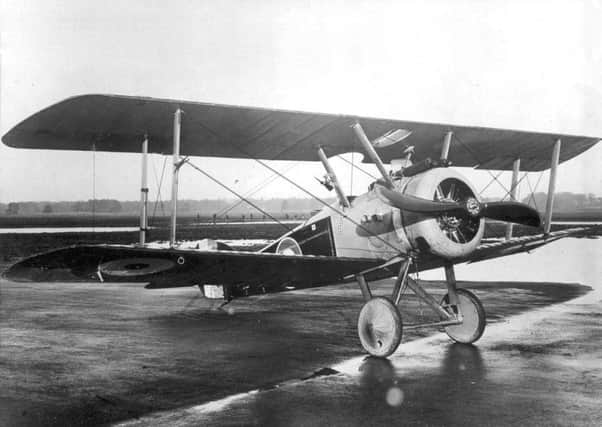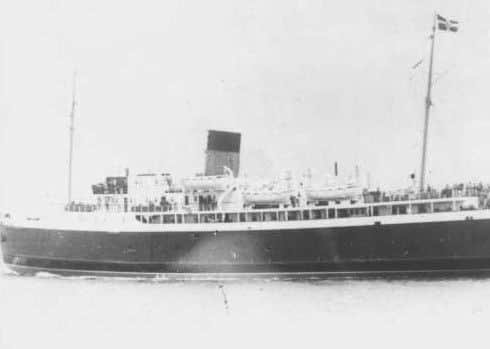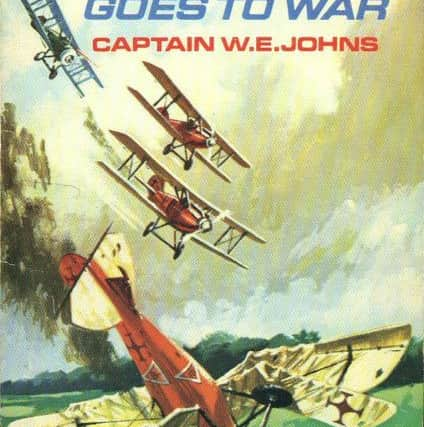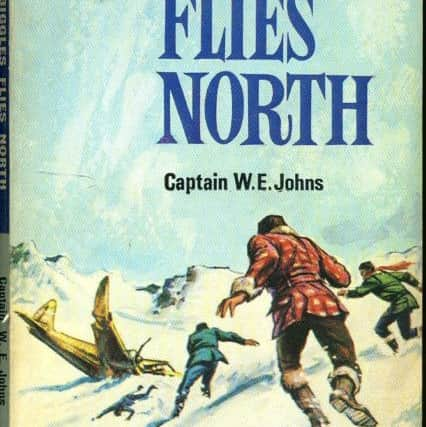Messages to Roamer about sea tragedy, fictional flying ace and village pumps


January 31st was the 65th anniversary of the terrible winter night when over 130 of the Stranraer to Larne ferry’s passengers perished during a Europe wide storm.
MV Princess Victoria sank in viciously high seas, gales and blizzards off the Copeland Islands.
Advertisement
Hide AdAdvertisement
Hide AdNot one woman or child survived as they were the first passengers into the first lifeboat that sank when the listing ship slammed into it.


Recalling that awful night when news of the sinking spread across Northern Ireland, I clearly remember the sadness that hung over my little primary school in Enniskillen long into 1953, and beyond.
Our teachers told us that someone from the town had died in the tragedy, and whilst I was too young to comprehend the disaster, it’s one of those memories that has lingered on, very vividly, even though I never knew the name of the person who perished.
Until a message arrived a few days ago from Joan in Enniskillen: “You said about the sadness in school. I was at the Collegiate School then. The disaster affected many of us teenagers in Enniskillen because a young man we all knew was lost that night. He was Norman Gillanders and he lived on the Dublin Road just opposite the primary school.”
Advertisement
Hide AdAdvertisement
Hide AdJoan’s note probably explains why my memories of the tragedy are so vivid, because the school that I attended was just across the road from Mr Gillanders’ house, and some of my little school chums lived in adjoining houses.


Her letter continued: “He had been in the Boys Brigade and was very well known, and I think he had a brother too. I thought you would be interested to know why so many school teachers were affected.”
Childhood memories of a much happier kind were well and truly rekindled recently when a News Letter reader asked me – “Did you read Biggles books when you were a lad?”
Did I read them? I virtually learnt them off by heart, and I’ve kept some of them, which I sometimes glance through for old times’ sake.
Advertisement
Hide AdAdvertisement
Hide AdIf you haven’t heard of Biggles, they’re prolific author Captain W E Johns’ classic boys’ stories about the fictional pilot, daredevil and adventurer James Bigglesworth, nicknamed Biggles.


Having been reminded of him, I was hugely surprised to discover that over 100 Biggles books were published, from The Camels Are Coming in 1932 (the Sopwith Camel was a British First World War single-seat, biplane, fighter aircraft) to Biggles Air Ace –The Uncollected Stories, published in 1999.
Roamer has tried his hand at writing comedy scripts down the years and, intriguingly, one of my first experiences of literary humour was in a Biggles book.
One of his fictional flying comrades was his cousin Algernon Montgomery Lacey, nicknamed ‘Algy’.
Advertisement
Hide AdAdvertisement
Hide AdAlgy was posted to Biggles’ flight in 266 Squadron and the two pilots quickly became close friends.


Eventually becoming Biggles’ second in command, Algy caught a bad cold in one of the books and had a very sore throat.
No matter what medicines and tinctures he consumed his throat remained raspingly painful.
Cousin Biggles suggested a cure – “Drink a pint of aviation fuel daily for a week,” he told Algy “and then apply a lighted match to the tonsils!”
Advertisement
Hide AdAdvertisement
Hide AdI shared that story with all my wee chums (very few of them laughed as hard as I did!) and I still remember Captain W E Johns’ humour six decades later!
Who was he?
Sadly, I can’t source any photographs of him, but William Earl Johns (1893-1968) was born in Hertford, England, the son of tailor Richard Johns, and Elizabeth (née Earl), who was the daughter of a master butcher.


William went to Hertford Grammar School and wanted to become a soldier.
After school he worked as a surveyor and sewage engineer, enlisted in the Territorial Army in 1913, and when he was mobilised in August 1914 he was sent overseas on Titanic’s Belfast built sister-ship RMS Olympic.
Advertisement
Hide AdAdvertisement
Hide AdHe was commissioned into the Royal Flying Corps in September 1917 and after being shot down over enemy territory he was held in a German POW camp until the end of First World War.
He remained in the RAF until 1927 and then became a writer, though he’d published his first book in 1922.
W E Johns was an amazingly prolific author.
In his 46 year writing career he wrote over 160 books, including around 100 Biggles stories, more than 60 other novels and factual books, and dozens of magazine articles and short stories.
My third and final reader’s message is simple, straightforward, and innovative.
Advertisement
Hide AdAdvertisement
Hide AdReferring to the enormous amount of waste plastic in our oceans and the growing interest in getting back to reusable glass bottles, a reader suggested that village pumps will probably become popular again.
Several were mentioned in passing, providing fresh water and thus cutting down on the need for bottles, whether glass or plastic.
I’ll be reporting further about this, and anyone with any information is invited to write to the address on this page, but to my great surprise there’s county-by-county National Register of Village Pumps which lists numbers of preserved pumps in Antrim (76), Down (125), Armagh (36), Tyrone (27), Londonderry (21), and Fermanagh (14).
More are in the pipeline for this page!